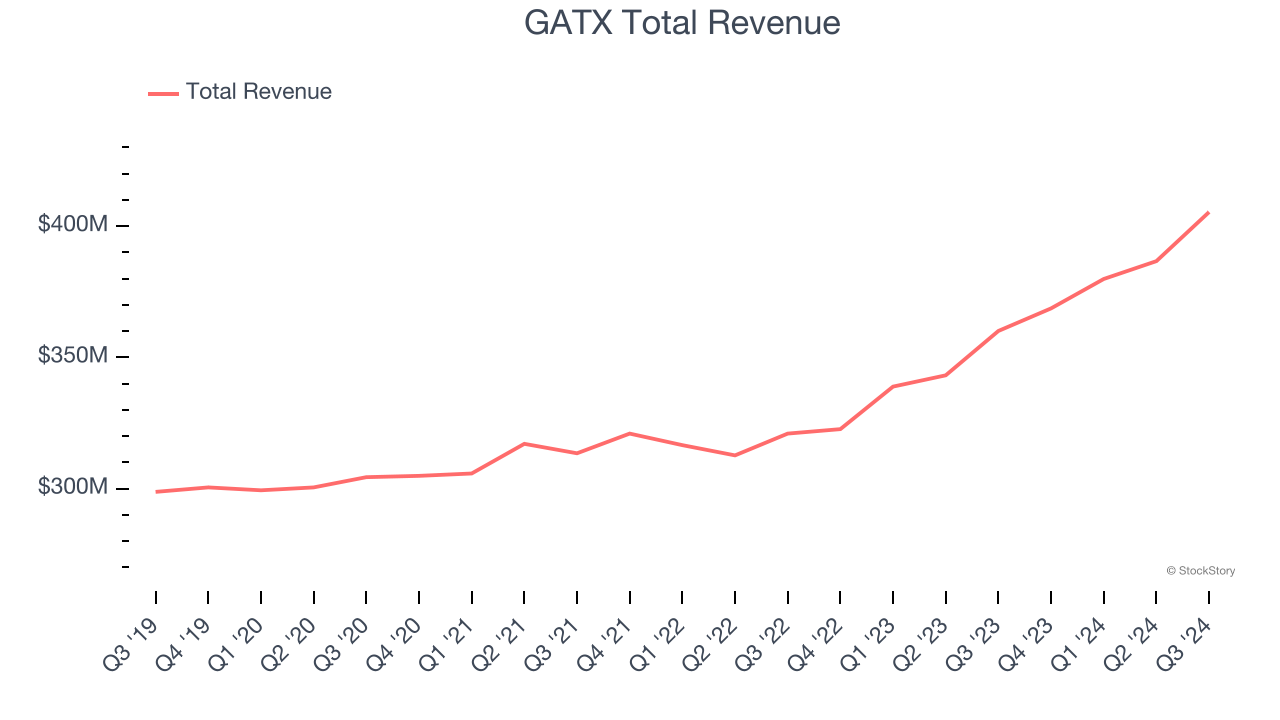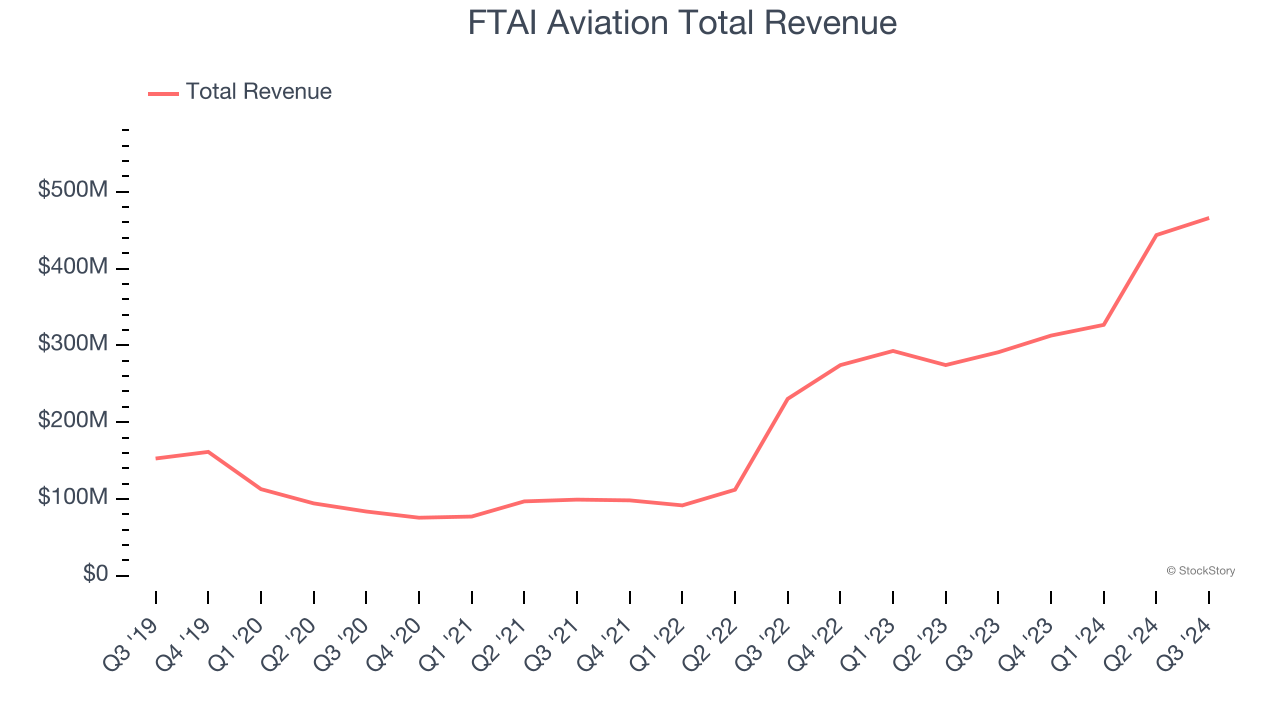
The end of the earnings season is always a good time to take a step back and see who shined (and who not so much). Let’s take a look at how vehicle parts distributors stocks fared in Q3, starting with GATX (NYSE: GATX).
Supply chain and inventory management are themes that grew in focus after COVID wreaked havoc on the global movement of raw materials and components. Transportation parts distributors that boast reliable selection in sometimes specialized areas combined and quickly deliver products to customers can benefit from this theme. Additionally, distributors who earn meaningful revenue streams from aftermarket products can enjoy more steady top-line trends and higher margins. But like the broader industrials sector, transportation parts distributors are also at the whim of economic cycles that impact capital spending, transportation volumes, and demand for discretionary parts and components.
The 4 vehicle parts distributors stocks we track reported a very strong Q3. As a group, revenues beat analysts’ consensus estimates by 4.8%.
Thankfully, share prices of the companies have been resilient as they are up 6.7% on average since the latest earnings results.
Best Q3: GATX (NYSE: GATX)
Originally founded to ship beer, GATX (NYSE: GATX) provides leasing and management services for railcars and other transportation assets globally.
GATX reported revenues of $405.4 million, up 12.6% year on year. This print exceeded analysts’ expectations by 3.5%. Overall, it was a stunning quarter for the company with an impressive beat of analysts’ EPS estimates and full-year EPS guidance beating analysts’ expectations.

Interestingly, the stock is up 16.7% since reporting and currently trades at $152.83.
Is now the time to buy GATX? Access our full analysis of the earnings results here, it’s free.
FTAI Aviation (NASDAQ: FTAI)
With a focus on the CFM56 engine that powers Boeing and Airbus’s planes, FTAI Aviation (NASDAQ: FTAI) sells, leases, maintains, and repairs aircraft engines.
FTAI Aviation reported revenues of $465.8 million, up 60% year on year, outperforming analysts’ expectations by 10.8%. The business had a very strong quarter with an impressive beat of analysts’ EBITDA estimates and a decent beat of analysts’ EPS estimates.

FTAI Aviation scored the biggest analyst estimates beat and fastest revenue growth among its peers. The market seems happy with the results as the stock is up 8.9% since reporting. It currently trades at $157.97.
Is now the time to buy FTAI Aviation? Access our full analysis of the earnings results here, it’s free.
Weakest Q3: Air Lease (NYSE: AL)
Established by a founder of Century City in Los Angeles, Air Lease Corporation (NYSE: AL) provides aircraft leasing and financing solutions to airlines worldwide.
Air Lease reported revenues of $690.2 million, up 4.7% year on year, exceeding analysts’ expectations by 2.1%. It may have had the worst quarter among its peers, but its results were still good as it also locked in an impressive beat of analysts’ EBITDA and EPS estimates.
Air Lease delivered the weakest performance against analyst estimates in the group. The stock is flat since the results and currently trades at $47.48.
Read our full analysis of Air Lease’s results here.
Rush Enterprises (NASDAQ: RUSHA)
Headquartered in Texas, Rush Enterprises (NASDAQ: RUSH.A) provides truck-related services and solutions, including sales, leasing, parts, and maintenance for commercial vehicles.
Rush Enterprises reported revenues of $1.90 billion, down 4.3% year on year. This print beat analysts’ expectations by 2.9%. Overall, it was a strong quarter as it also put up a solid beat of analysts’ adjusted operating income estimates and an impressive beat of analysts’ EPS estimates.
Rush Enterprises had the slowest revenue growth among its peers. The stock is up 1% since reporting and currently trades at $55.45.
Read our full, actionable report on Rush Enterprises here, it’s free.
Market Update
Thanks to the Fed's series of rate hikes in 2022 and 2023, inflation has cooled significantly from its post-pandemic highs, drawing closer to the 2% goal. This disinflation has occurred without severely impacting economic growth, suggesting the success of a soft landing. The stock market has thrived in 2024, spurred by recent rate cuts (0.5% in September and 0.25% each in November and December), and a notable surge followed Donald Trump's presidential election win in November, propelling indices to historic highs. Nonetheless, the outlook for 2025 remains clouded by the pace and magnitude of future rate cuts as well as potential changes in trade policy and corporate taxes once the Trump administration takes over. The path forward is marked by uncertainty.
Want to invest in winners with rock-solid fundamentals? Check out our Top 5 Quality Compounder Stocks and add them to your watchlist. These companies are poised for growth regardless of the political or macroeconomic climate.
Join Paid Stock Investor Research
Help us make StockStory more helpful to investors like yourself. Join our paid user research session and receive a $50 Amazon gift card for your opinions. Sign up here.

